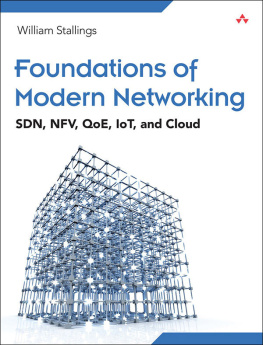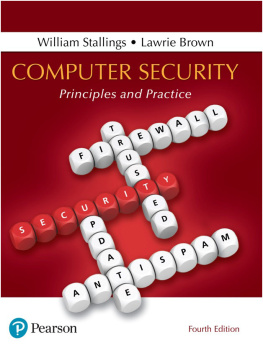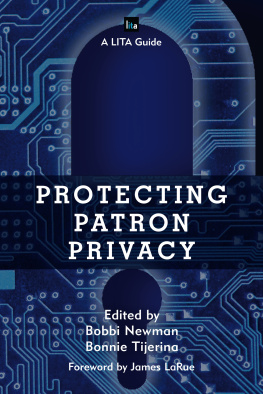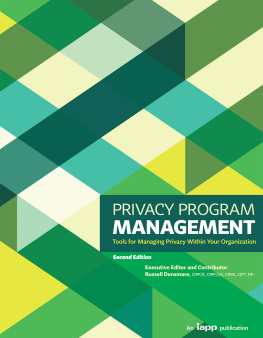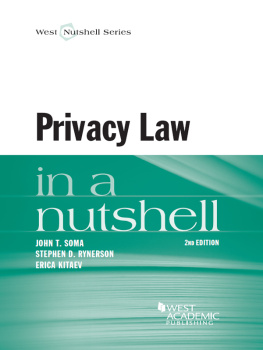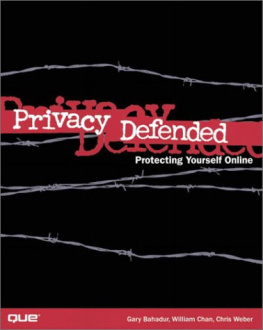About This eBook
ePUB is an open, industry-standard format for eBooks. However, support of ePUB and its many features varies across reading devices and applications. Use your device or app settings to customize the presentation to your liking. Settings that you can customize often include font, font size, single or double column, landscape or portrait mode, and figures that you can click or tap to enlarge. For additional information about the settings and features on your reading device or app, visit the device manufacturers Web site.
Many titles include programming code or configuration examples. To optimize the presentation of these elements, view the eBook in single-column, landscape mode and adjust the font size to the smallest setting. In addition to presenting code and configurations in the reflowable text format, we have included images of the code that mimic the presentation found in the print book; therefore, where the reflowable format may compromise the presentation of the code listing, you will see a Click here to view code image link. Click the link to view the print-fidelity code image. To return to the previous page viewed, click the Back button on your device or app.
Information Privacy Engineering and Privacy by Design
Information Privacy Engineering and Privacy by Design
Understanding Privacy Threats, Technology, and Regulations Based on Standards and Best Practices
Dr. William Stallings
Many of the designations used by manufacturers and sellers to distinguish their products are claimed as trademarks. Where those designations appear in this book, and the publisher was aware of a trademark claim, the designations have been printed with initial capital letters or in all capitals.
The author and publisher have taken care in the preparation of this book, but make no expressed or implied warranty of any kind and assume no responsibility for errors or omissions. No liability is assumed for incidental or consequential damages in connection with or arising out of the use of the information or programs contained herein.
OASIS and PMRM are trademarks of OASIS, the open standards consortium where the PMRM specification is owned and developed. PMRM is a copyrighted work of OASIS Open. All rights reserved.
For information about buying this title in bulk quantities, or for special sales opportunities (which may include electronic versions; custom cover designs; and content particular to your business, training goals, marketing focus, or branding interests), please contact our corporate sales department at or (800) 382-3419.
For government sales inquiries, please contact .
For questions about sales outside the U.S., please contact .
Visit us on the Web: informit.com/aw
Library of Congress Control Number: 2019952003
Copyright 2020 Pearson Education, Inc.
All rights reserved. Printed in the United States of America. This publication is protected by copyright, and permission must be obtained from the publisher prior to any prohibited reproduction, storage in a retrieval system, or transmission in any form or by any means, electronic, mechanical, photocopying, recording, or likewise. For information regarding permissions, request forms and the appropriate contacts within the Pearson Education Global Rights & Permissions Department, please visit www.pearson.com/permissions/.
ISBN-13: 978-0-13-530215-6
ISBN-10: 0-13-530215-3
ScoutAutomatedPrintCode
Editor-in-Chief
Mark Taub
Product Line Manager
Brett Bartow
Development Editor
Christopher A. Cleveland
Managing Editor
Sandra Schroeder
Senior Project Editor
Lori Lyons
Copy Editor
Catherine D. Wilson
Production Manager
Gayathri Umashankaran/codeMantra
Indexer
Tim Wright
Proofreader
Karen Davis
Technical Reviewers
Bruce DeBruhl
Stefan Schiffner
Editorial Assistant
Cindy Teeters
Cover Designer
Chuti Prasertsith
Compositor
codeMantra
To my loving and loyal wife, Tricia
Contents at a Glance
Appendix (Online Only): Answers to Review Questions
Table of Contents
Appendix (Online Only): Answers to Review Questions
Preface
Information privacy is the right of individuals to control or influence what information related to them may be collected, processed, and stored and by whom and to whom that information may be disclosed. In the context of information, the term privacy usually refers to ensuring that ostensibly private information about an individual is unavailable to parties that should not have that information.
Information privacy has become a high priority in all private and public organizations. Our society is being exposed to greater privacy threats and developing skills around Internet privacy, and safety is crucial to protecting our organizations and ourselves. The implementation of information privacy is the responsibility of IT organizations, specifically IT management, IT security management, and IT engineers. In addition, most organizations now have a senior privacy official or group to oversee compliance with privacy requirements. Typically, a chief privacy officer, data protection officer, or privacy leader fills this role.
Effective information privacy is very difficult. Increasingly, organizations have adopted an approach based on two concepts:
Privacy by design: Encompasses management and technical means for including privacy considerations throughout the system development life cycle. The goal is to embed privacy in the design and architecture of IT systems and business practices.
Privacy engineering: Encompasses the implementation, deployment, and ongoing operation and management of privacy features and controls in systems. Privacy engineering involves both technical capabilities and management processes.
Both standards documents, such as those issued by the International Organization for Standardization (ISO), and regulations, such as the European Union's General Data Protection Regulation (GDPR), mandate the use of privacy by design and privacy engineering.
The goal of this book is to present a comprehensive treatment of privacy by design and privacy engineering that will enable privacy executives and privacy engineers to manage and implement the privacy requirements dictated by standards, regulations, contractual commitments, and organizational policy.
Organization of the Book
The book consists of six parts:
presents a survey of basic information privacy concepts, including privacy by design and privacy engineering.
covers information privacy threats and the privacy vulnerabilities of information systems. Together, an understanding of requirements, threats, and vulnerabilities structure and guide privacy by design and privacy engineering solutions.
examines countermeasures to malicious software and to intruders.
discusses the concept of data loss prevention and examines privacy issues related to cloud computing and the Internet of Things.


